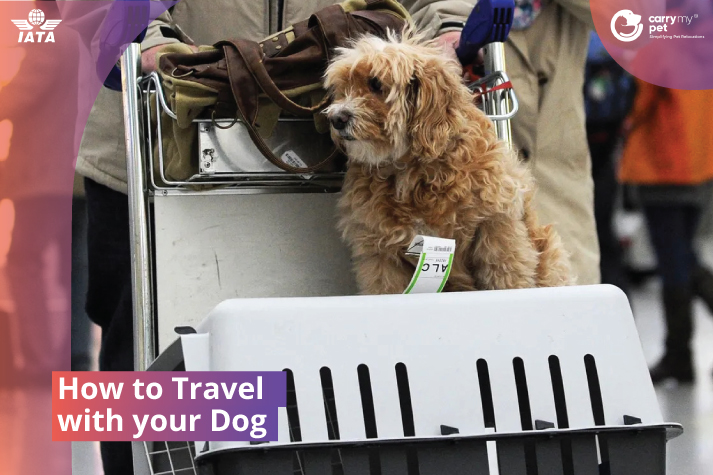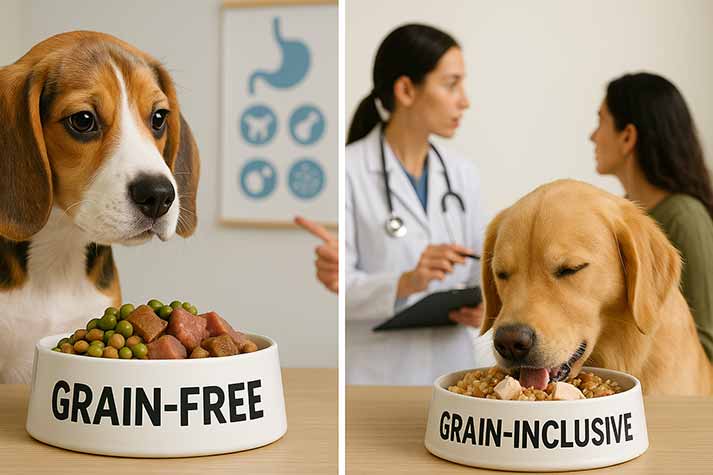
23 Oct
How to Travel with your Dog
Travelling with your dog can be a wonderful experience. Relaxing and enjoying the
finer things in life while enjoying a change of scenery is lovely, especially
when doing so with your furry companion. Animals are great traveling companions,
so a road trip with your pet can be wonderful. However, if you’re someone
who plans to do so, there are some things to bear in mind. Here’s how to
travel with your pet dog, via road, rail, or air. It is necessary to be prepared while travelling, given how there is no guarantee
of any facilities when on the move. Carry a first aid kit, collars, leashes,
water bottles and bowls, and toys. Bring along a spare pillow or blanket for
them to sprawl on when out of their crate. As a safety precaution, schedule a
visit with your vet for a pre-travel checkup and carry a medicine pouch with
you. Make sure your pet is microchipped, as a microchip is the only proof of
identity a pet has. It is important to get your pet used to being in a car, if your pet is not
accustomed to a car already. Before making a big trip, take your pet out for
shorter drives so they can get used to the environment of a vehicle and become
comfortable traveling in it. Carry their favorite toys and treats and sit in a
stationary car so they can relax without the stress of traveling. By extension,
crate training is required for your pet, as they will be spending considerable
amounts of time in it. Follow the same process of acclimation as the car; start
small, give them love and treats for interacting with the crate freely, take
them on shorter journeys before going on a long one, and leave their favorite
toy with them. It is also wise to plan your rest and refreshment stops before embarking on any
journey. Be sure to check beforehand whether the rest stop/hotel/accommodation
you booked is pet-friendly, cozy and clean. Calling the property is always
advised to get up-to-date information and avoid a situation where you are denied
a booking due to out-of-date information on their end. While stopping for bathroom breaks or fuel stops, make sure your pet is secure
before opening any doors or windows and is leashed inside the car. New sights
and smells may overwhelm your pet in an unfamiliar setting, so remember to be
patient. Make sure to also carry some dry food with you, in case the
refreshments and catering services are not up to par. It is important to note, an un-leashed dog inside can deviate your focus from the
road, which is not a good thing. Smaller dogs should also be carried in crates.
If you have a larger dog who isn’t comfortable in a crate, belt them in
their seat and attach their leash to the belt or a secure location. A pup poking
its head outside a window is adorable but can be dangerous as well. When travelling by train, it is important to prepare appropriately. You should
always accompany your pet in a train carriage as their owner, or at least make
sure someone you trust can do the same. You should be able to take care of their
basic needs, such as their toilet breaks and food, and make sure they are
comfortable. You also need to make your bookings wisely; if your pet is with
you, it is likely you will have to book a whole compartment for their comfort.
Once again, it is important to get your pet used to being in a confined space.
When travelling with your pet via train, there are various previously unknown
sights and smells which they will interact with. As a pet parent, it is your job
to make them comfortable and at ease in such a situation. Try socially training
your pup so they can become accustomed to the hustle and bustle of human life
and not feel any nervousness. Make sure to crate train your pup as well, in case
they need to be moved around in a crate. Given the short travel time and ability to travel across longer distances, flying
is often the preferred means of transportation for pets. The next question you
might ask is, given how safe it is, how can I carry my pet on a flight? Flying with a pet is not a risky process if you prepare properly. Consult your
vet and schedule a check-up and get a clean bill of health before any travel.
Make sure your fur baby’s vaccinations are up-to-date and that their
vaccination book reflects that. Make sure to carry your original documents and a
copy of each to ensure hassle-free travel. The same goes for your pet. When flying your pup, you will have to choose an IATA-approved pet crate. Such a
crate is designed specifically to be strong and sturdy on the ground and in a
flight. If you have a larger dog, buy a crate that is slightly larger than them,
so they have the maximum possible space during the flight. It is important to specify the plane you’re flying in to have a temperature
and pressure-controlled cargo hold. A good animal travel company can verify if
an airline has a reliable reputation for transporting pets, and if their plane
has a temperature-controlled cargo hold. Such a company can also make sure that
your pet has sufficient food and water before take-off. Flying your pet can come across as a more laborious process when compared to
roadways or railways, but that tends to happen with every area of air travel. If
you are unsure about the documentation process or feel hassled by the
airline’s requirements, you can always choose a pet travel company to
assist you with your relocation needs.Dog Transportation by Road
Dog Transportation by Rail
Dog Transportation by Air






AUTHOR’S BIO
Carry My Pet
Passionate pet enthusiasts and globetrotters, dedicated to easing furry friends' journeys worldwide. Penning tales of compassion at CarryMyPet, where every relocation is a tail-wagging adventure.